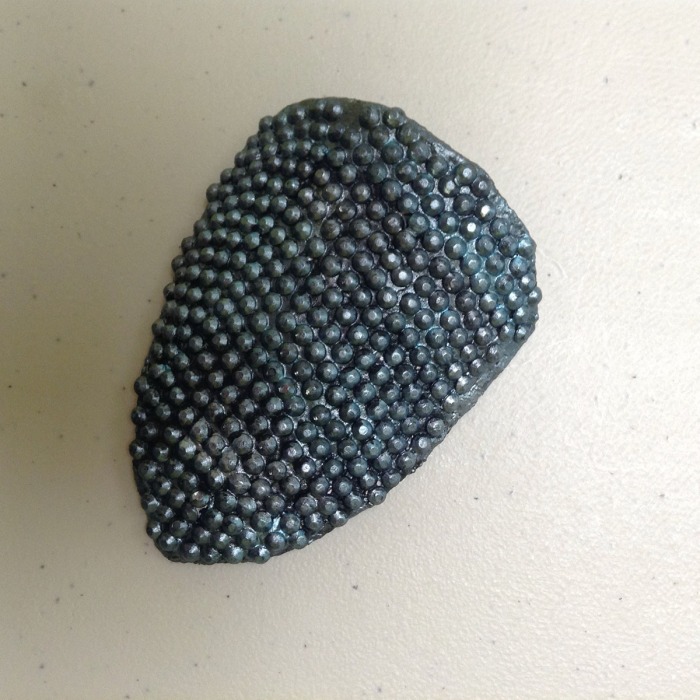I had the joy of starting off the new year in a fun way: by leading a “Dragon Masters” camp for tweens.

The camp was hosted by the Creative Writing for Children Society (CWC) and involved sculpting dragon scales, painting gemstones, drawing fantastical creatures, and—of course—writing about dragons, too!
One of the best aspects of this three-day camp is that I had only 15 students, which meant that we could really immerse ourselves in the activities and I had a lot of one-on-one time with each one of the kids. Many of them had worked with me in the past, so it was a fun way to reconnect with them.
“I Am” poetry
The first activity we worked on was a pair of point-of- view poems. Students brainstormed two characters, one a thief trying to steal something from a dragon’s lair, and the other a dragon who was being threatened by the theft. The students wrote one poem from each perspective.
To help with this activity, we sculpted our own dragon scales, prompting many of the students to choose this as the item that the thief would steal from the creature. Of course, the students had to come up with a reason for the theft and the response from the dragon.
One thing about sculpting, is that it’s good thinking time for writers! While the kids sculpted, they could work out some ideas for their writing. But, of course, the sculpting project in itself was a lot of fun.
Sculpting dragon scales
Here are some photos of the scales in progress. We started with plastic shapes cut from a soda bottle, then plastered them. Some students opted to sculpt ridges or shapes into their design; others decided to do a flat surface, leaving the detailing for the next phase.

We actually had to let the scales dry overnight, but by the next morning they were ready for the students to add more detail by bejweling them (if they chose). By using acrylic gems, the students were able to add intricate detail and give their scales texture. By using the strips of acrylic gems (available at any dollar store), you can gain some uniformity, too.

Afterwards, we painted the scales with mod podge, to help bind everything together.

The last step was painting. I find that painting everything with a black base provides a rich undercoat; once this coat is dry, students can dry brush on a variety of metallic colors to help achieve that dragonish feel.
Of course, each student had a very specific idea for what their dragons looked like, or the type of environment they lived in, so their scales were design to match these concepts.
Here are a few of the completed projects:










Developing a story
After the students had explored the point-of-view poems, I had them choose one of the points of view, either the dragon or the thief, and then develop that perspective into a longer, more conventional story.
The poems were more about capturing character emotion, but the story provided the students with an opportunity to flesh out a plot.
I led the students in some brainstorming exercises and provided them with some vocabulary words to help invigorate their stories. (Honestly, I’m tired of my students overusing the word “run” so we worked hard on developing a list of alternate ways to describe how characters such as dragons and thieves might move.)



Gems of sorcery
One of the other projects that we worked on was painting glass cabochons to look like magical gems. The idea here was that these gems could be found in a dragon’s lair or a character could already be in possession of them and use them to train or communicate with a dragon.
The project is pretty simple; all you have to do is paint on the backside of the cabochons with fingernail paint. Abstract designs work well and are easy to do, though some of my students tried their hand at painting dragon eyes.





Welcome to the Dragon Races
One of the challenges of teaching a camp is making sure students always have something to work on. Everyone creates at a different pace, and I like to have everyone work organically, which means instead of developing a checklist of projects that MUST be completed, I just have a cauldron of projects to choose from once we start getting close to the end.
For the final day of our camp, I brought in my own custom-made dragon eggs to inspire extra stories about dragon’s hatching.

And, finally, for those students who had written, sculpted, and painted everything I had them finish off by imagining there was a dragon race coming up and had them illustrate posters.






This turned out to be a really successful camp. I want to thank the organizers and my two assistants, Jamie and Chelsea, who helped the kids work on their art projects and did a lot of the clean up. Jamie and Chelsea have been students of mine in the past and it’s really gratifying to see them step into a different role.
Next step? We’ve collected all the students’ writing and drawings and we’ll be publishing them in a short anthology.
